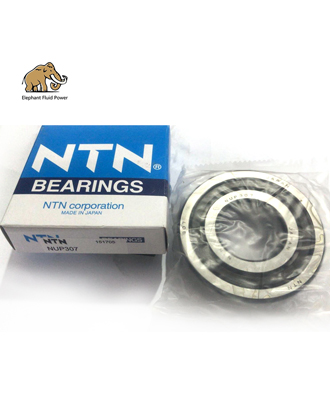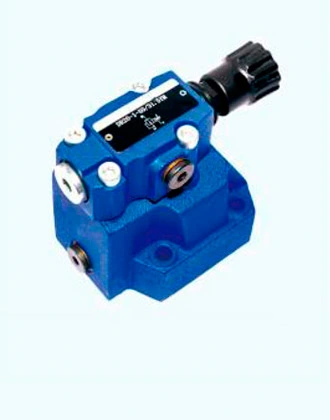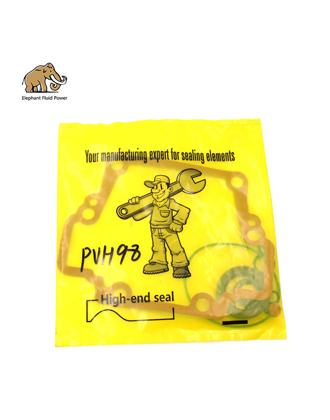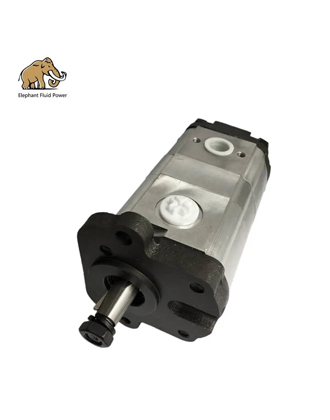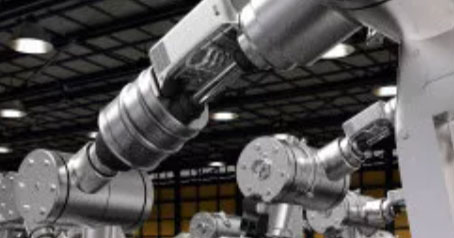In the world of industrial machinery and equipment, hydraulic systems serve as the backbone, enabling efficient power transmission and control. At the core of these systems, the dynamic duo of the hydraulic pump and hydraulic motor work in harmony to drive a multitude of applications across industries. This blog takes an in-depth look at these two essential components, their functionalities, types, and their pivotal role in shaping modern industries.
The Hydraulic Pump: Generating Hydraulic Energy
The hydraulic pump serves as the initiator of the hydraulic system's energy cycle. It converts mechanical energy, often supplied by an electric motor or an engine, into hydraulic energy. This hydraulic energy takes the form of pressurized hydraulic fluid. Hydraulic pumps create the pressure necessary to move hydraulic fluid through the system, enabling the transmission of force and motion. They play a critical role in amplifying power and ensuring that hydraulic systems function efficiently.
Synergy and Applications
Vane pumps utilize sliding vanes within a rotor to generate hydraulic flow. Their design offers smoother flow characteristics compared to gear pumps, making them ideal for applications that require consistent motion. Piston pumps come in various configurations, including axial and radial designs. They use reciprocating pistons to generate hydraulic pressure and are known for their high efficiency and precision. Converting Hydraulic Energy to Mechanical Power Hydraulic motors are responsible for converting hydraulic energy back into mechanical power. They use the pressurized hydraulic fluid to create rotational motion, which can be harnessed to drive machinery, vehicles, and various equipment. Hydraulic pumps and motors function in synergy within hydraulic systems, forming a closed-loop cycle of energy transmission. Pumped hydraulic fluid powers the motor, which, in turn, generates mechanical output. This collaboration is crucial in applications such as construction machinery, manufacturing processes, and transportation systems.
Precision and Control
Gear motors use meshing gears to convert hydraulic pressure into rotational motion. They are often used in applications where simplicity and cost-effectiveness are prioritized. Vane motors employ vanes mounted on a rotor to generate motion. They provide smoother operation and are favored in scenarios requiring controlled speed and torque. Piston motors, in both axial and radial configurations, utilize pistons to produce motion. They offer high power output, efficiency, and durability, making them suitable for heavy-duty tasks. Hydraulic systems, driven by pumps and motors, excel in providing precise control over motion and force. This level of control is vital in applications that demand accurate movements, consistent performance, and the ability to handle varying loads.
The combination of hydraulic pumps and hydraulic motors has revolutionized industries by enabling efficient power transmission, precise control, and unmatched versatility. These components form the backbone of hydraulic systems that drive modern machinery, making everything from construction to manufacturing more efficient and productive. As technology continues to advance, the synergy between hydraulic pumps and motors will undoubtedly continue to shape the landscape of industries across the globe.
 French
French
 Portuguese
Portuguese
 Russian
Russian
 German
German
 Spanish
Spanish
 Japanese
Japanese
 Korean
Korean
 Irish
Irish
 Greek
Greek
 Turkish
Turkish
 Italian
Italian
 Danish
Danish
 Romanian
Romanian
 Indonesian
Indonesian
 Czech
Czech
 Afrikaans
Afrikaans
 Swedish
Swedish
 Polish
Polish
 Basque
Basque
 Catalan
Catalan
 Esperanto
Esperanto
 Hindi
Hindi
 Lao
Lao
 Albanian
Albanian
 Amharic
Amharic
 Armenian
Armenian
 Azerbaijani
Azerbaijani
 Belarusian
Belarusian
 Bengali
Bengali
 Bosnian
Bosnian
 Bulgarian
Bulgarian
 Cebuano
Cebuano
 Chichewa
Chichewa
 Corsican
Corsican
 Croatian
Croatian
 Dutch
Dutch
 Estonian
Estonian
 Filipino
Filipino
 Finnish
Finnish
 Frisian
Frisian
 Galician
Galician
 Georgian
Georgian
 Gujarati
Gujarati
 Haitian
Haitian
 Hausa
Hausa
 Hawaiian
Hawaiian
 Hebrew
Hebrew
 Hmong
Hmong
 Hungarian
Hungarian
 Icelandic
Icelandic
 Igbo
Igbo
 Javanese
Javanese
 Kannada
Kannada
 Kazakh
Kazakh
 Khmer
Khmer
 Kurdish
Kurdish
 Kyrgyz
Kyrgyz
 Latin
Latin
 Latvian
Latvian
 Lithuanian
Lithuanian
 Luxembourg
Luxembourg
 Macedoniar
Macedoniar
 Malagasy
Malagasy
 Malay
Malay
 Malayalam
Malayalam
 Maltese
Maltese
 Maori
Maori
 Marathi
Marathi
 Mongolian
Mongolian
 Burmese
Burmese
 Nepali
Nepali
 Norwegian
Norwegian
 Pashto
Pashto
 Persian
Persian
 Punjabi
Punjabi
 Serbian
Serbian
 Sesotho
Sesotho
 Sinhala
Sinhala
 Slovak
Slovak
 Slovenian
Slovenian
 Somali
Somali
 Samoan
Samoan
 Scots Gaelic
Scots Gaelic
 Shona
Shona
 Sindhi
Sindhi
 Sundanese
Sundanese
 Swahili
Swahili
 Tajik
Tajik
 Tamil
Tamil
 Telugu
Telugu
 Thai
Thai
 Ukrainian
Ukrainian
 Urdu
Urdu
 Uzbek
Uzbek
 Vietnamese
Vietnamese
 Welsh
Welsh
 Xhosa
Xhosa
 Yiddish
Yiddish
 Yoruba
Yoruba
 Zulu
Zulu

